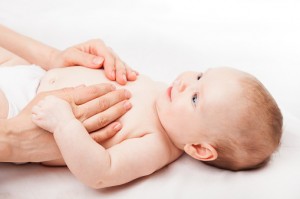
Torticollis is a condition of the neck in which the child’s head tilts toward one shoulder and the chin rotates towards the opposite shoulder. It occurs when one of the muscles (sternocleidomastoid muscle) in the child’s neck is tight.
Signs & Symptoms
- Flattening of the back of the head on one side
- Hip dysplasia
- Limited range of motion in the head
- Small bump on the side of the baby’s neck
Your Child and Torticollis
About 1 in 250 infants are born with torticollis. (Ten to 20 percent of babies with torticollis also have hip dysplasia, in which the hip joint is malformed.)
Torticollis limits the ability for a child to move their head freely to see, hear and interact with his/her environment. Because of this torticollis may lead to delayed body awareness, weakness and difficulties with balance, and asymmetrical use of their arms and legs through developmental stages. This asymmetry can lead to uneven weight bearing through the legs and favoring one side of the body.
If your child does have Torticollis your pediatrician would likely diagnose your baby within the first 2-3 months. Most cases of torticollis respond very well to physical therapy intervention. It is important that parents get their children into physical therapy as soon as possible. The older the child is the tighter the SCM becomes and the harder it becomes to stretch the child due to their increased activity level.
Physical Therapy is safe Effective Treatment
At the physical therapy initial evaluation, the parents will be given a home exercise program including:
- Range of motion exercises
- Massage instructions
- Positioning ideas
The combination of physical therapy and home exercise is important to the success of the program. A good deal of parents are surprised as to how quickly they see improvement in their infant’s posture and ability to move to different positions.
